
Year of the Perfect Hair: 2025’s Most Essential Ins & Outs
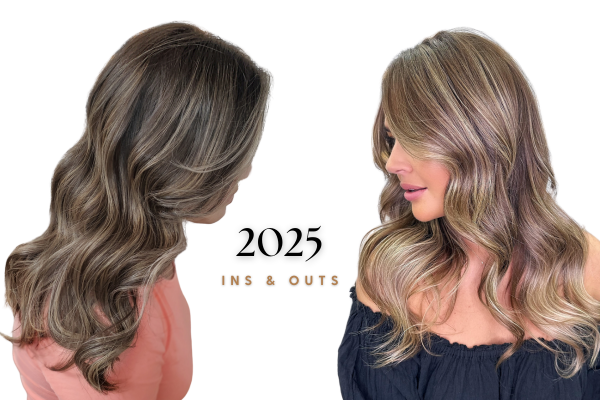
Welcome to the 2025 Hair Edition of what’s hot and what’s definitely not! As a hairstylist salon owner, I’m always on the lookout for the latest trends, best practices, and freshest takes on hair care. This year, we’re focusing heavily on hair-protecting habits, healthy styling techniques, and subtle yet impactful looks. But we’re also calling out some major “out” trends and habits that can sabotage your hair health.
Below, you’ll find an in-depth look at the Ins—trends that are skyrocketing into popularity—and the Outs—the practices best left behind. Feel free to share this post, comment your thoughts, and follow for more hair care tips. If you’re aiming for fabulous, healthy, and Instagram-ready tresses all through 2025, this is the guide for you!
Table of Contents
2025 INS
Why Hair-Care Habits Are More Important Than Ever
Weekly Hair Masks, Leave Ins, Conditioners & Heat Protection
The Rise of Big Voluminous Blowouts
Old Money Brunettes: A Classic Understated Look
Minimal, Effortless Blends : Soft and Low Contrast Colour
The Comeback of Side Parts
Microfiber Towels : Gentle and Efficient
Shower Filters to Combat Hard Water
Choosing The Right Brush For Your Hair Type
Refer Friends & Family; Supporting Small Businesses
2025 Outs
Overprocessed Ashy Blondes: Why They're Out
Avoiding Drugstore Hair Products
The Crunchy Hairspray Dilemma
Sleeping With Wet Hair : A No -No
Inconsistent Hair Routines: The Hidden Damage
High Heat Styling : Proceed With Caution
Arriving at Your Appointment With Dirty Hair
Overgrown Roots : Why Maintenance Matters
Seeing Your Hairstylist Only Once a Year
Sally’s and Box Dye : What You Need to Know
Conclusion
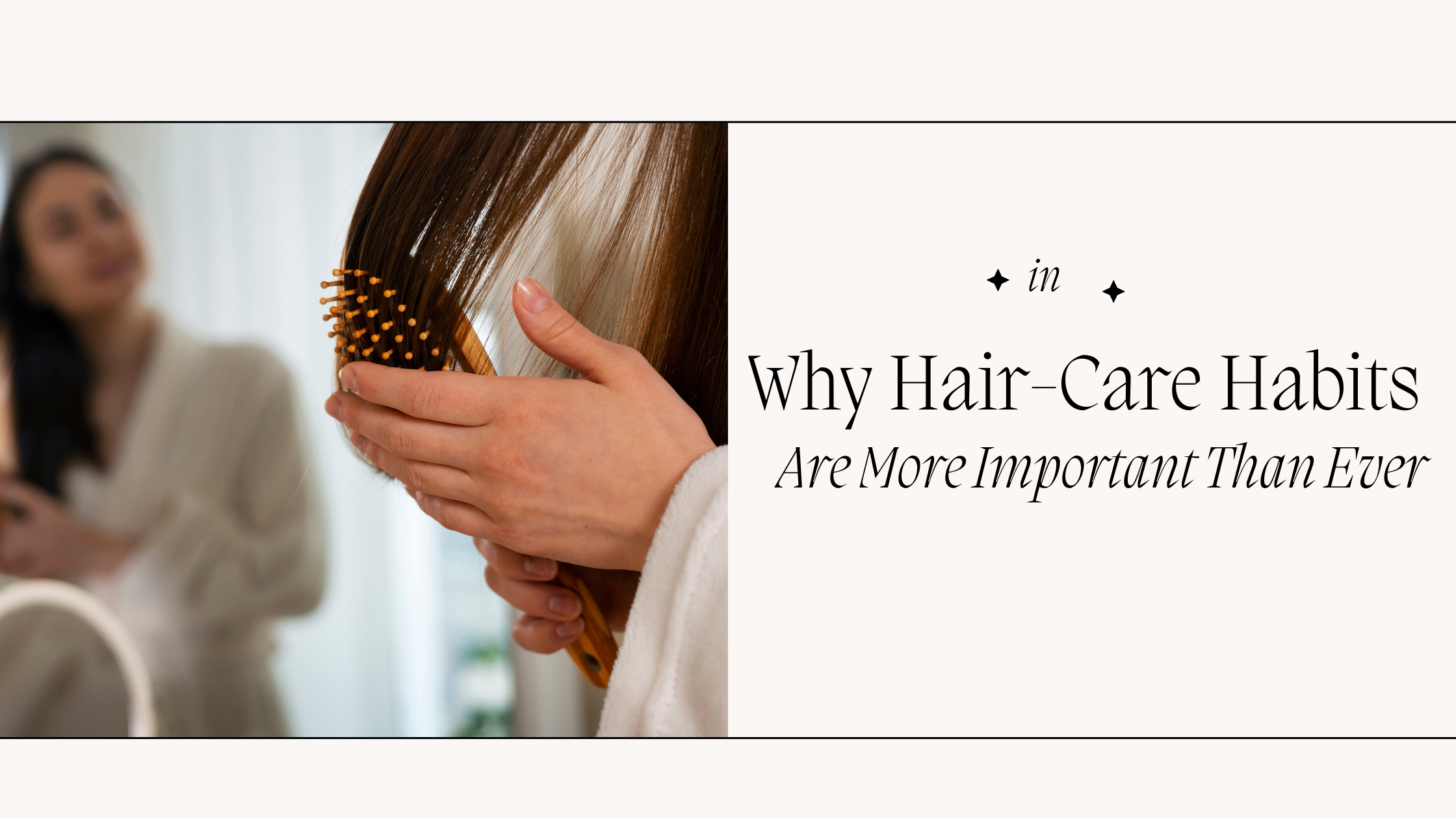
Healthy hair-care habits are taking center stage in 2025. Gone are the days of quick fixes and short-term, damaging styling techniques. More than ever, clients are asking how to maintain long-term hair health, add natural shine, and avoid dryness or breakage. This shift toward nourishing hair and scalp is not just for aesthetics—though healthy hair always looks better—but also for overall well-being.
When you take the time to build healthy habits, you can save yourself from a lot of frustration and unexpected expenses on corrective treatments later. Our focus this year: intentional and holistic approaches that consider everything from the products you use, the treatments you invest in, to even small lifestyle changes like using a soft towel or implementing a consistent night-time routine.
Hair routine | Long-term hair health | Scalp health
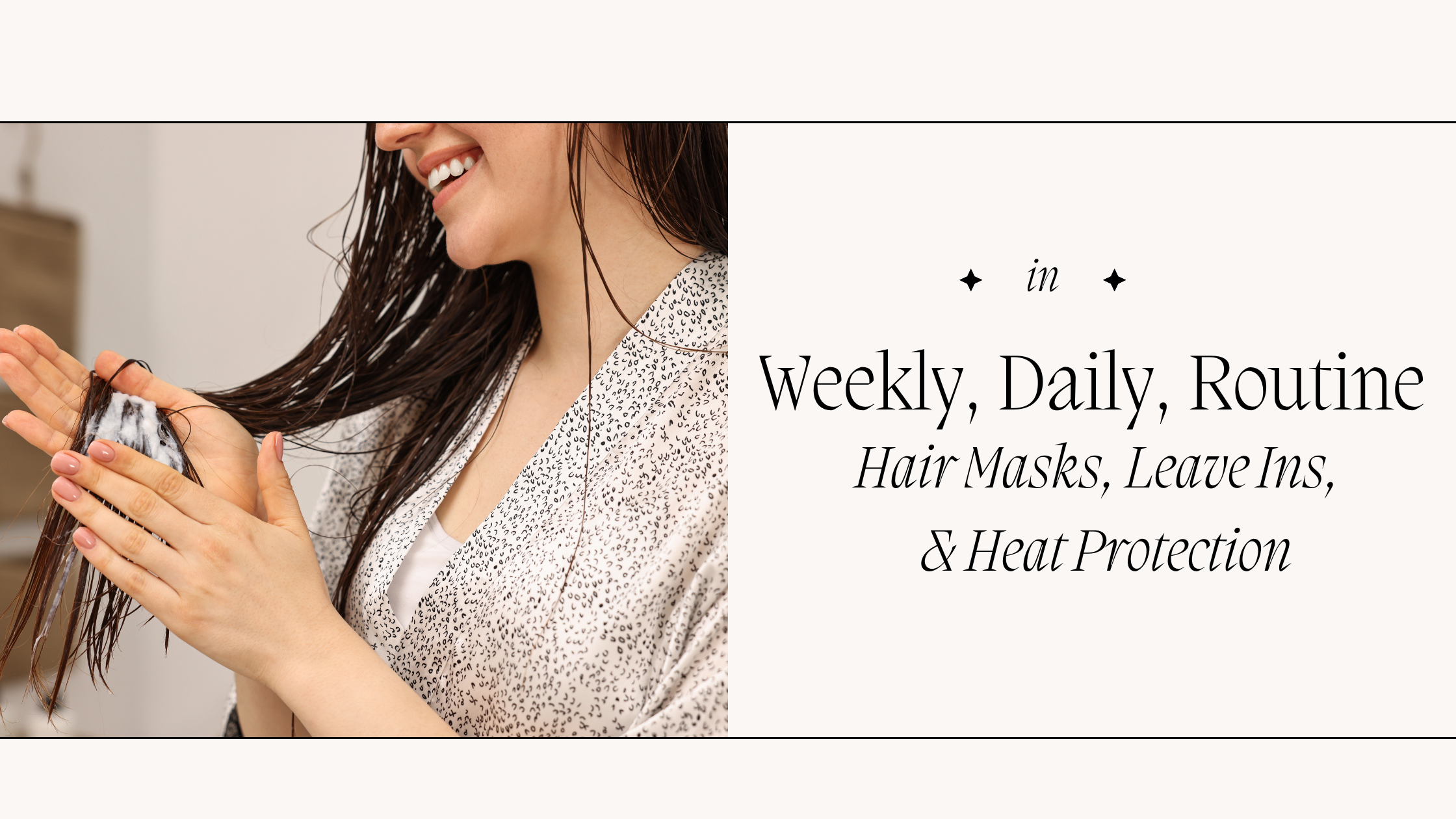
If 2025 has a single motto, it’s: Protect, Protect, Protect. The rise of hair breakage and scalp issues due to stress, environmental damage, and busy lifestyles has led to a renaissance of protective hair treatments. These can include:
Weekly Hair Masks: Providing deep nourishment to your strands, weekly hair masks can help repair damage, lock in moisture, and restore shine. Look for natural ingredients or high-quality salon products specially formulated for your hair type. Applying a hair mask once a week can dramatically reduce split ends and dryness.
Leave-In Conditioners: This is your daily ally for detangling and moisturizing. After shampooing, towel-dry your hair and then apply a leave-in conditioner. Not only does it smooth your hair cuticle, but it also offers frizz control and long-lasting hydration, making it crucial for maintaining silky locks between wash days.
Heat Protection: One of the biggest mistakes is applying direct heat (from blow dryers, straighteners, or curling irons) without a heat protectant. These products coat your strands and shield them from thermal damage. Think of it as a sunscreen for your hair—absolutely essential if you frequently style with heat.
Oiling to Remove Mineral Buildup: If you live in an area with hard water, you’ll be familiar with the issues it causes—tangles, dullness, and buildup that weighs your hair down. Using a clarifying oil treatment (like coconut or argan oil) before shampooing can help remove some of the minerals and keep your hair feeling fresh and full of life.
By adopting these protective treatments, you’re laying the groundwork for vibrant, resilient hair in 2025.
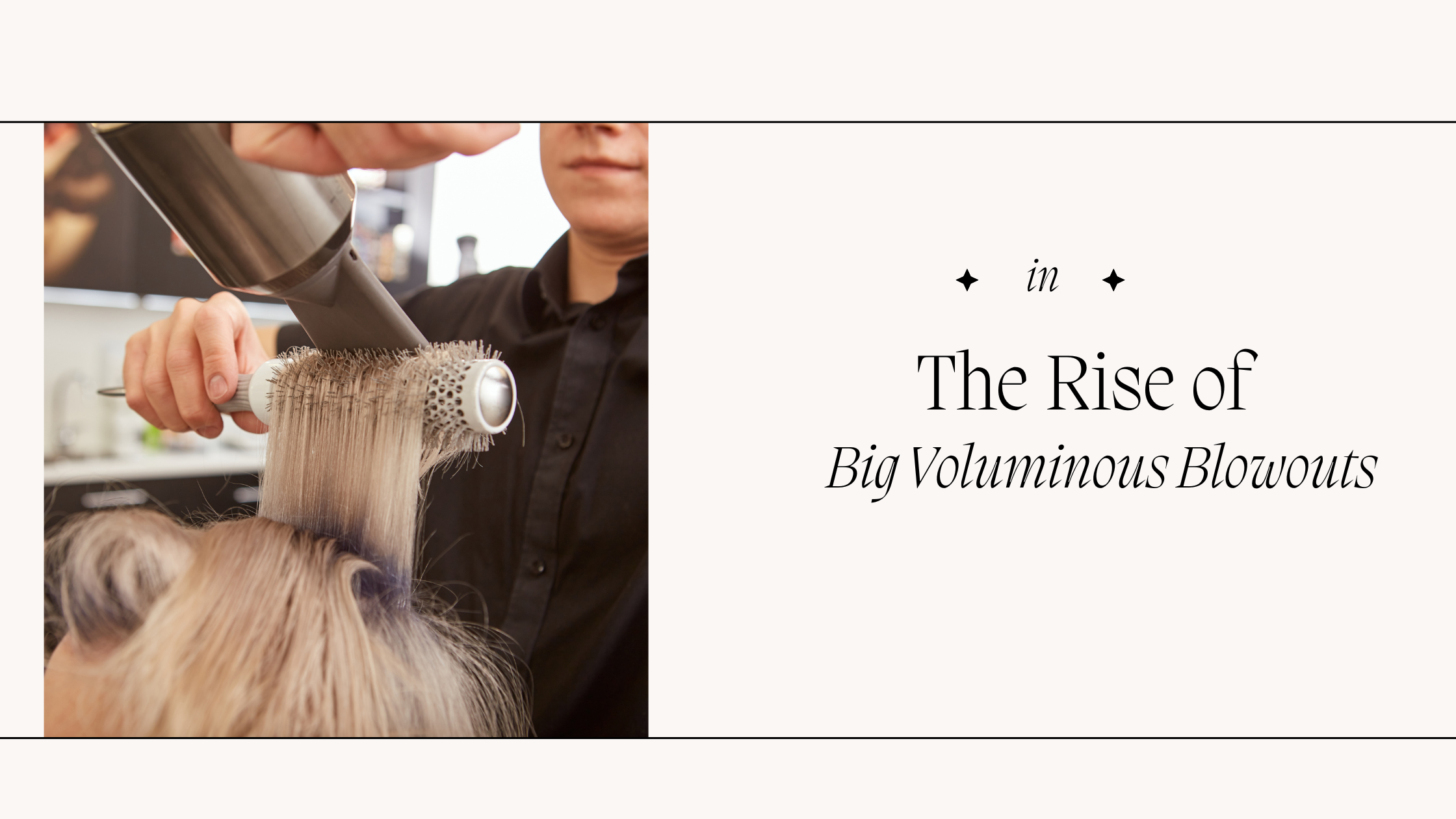
It’s official: big, voluminous blowouts are in! We’re stepping away from the ultra-flat, pin-straight styles and moving toward soft, bouncy volume that shows off your hair’s natural body. Whether you’re using a round brush and a blow dryer at home or visiting the salon for a professional blowout, volume is the name of the game.
How to Achieve the Look:
Prep: Start with a volumizing shampoo and conditioner. Towel-dry (preferably with a microfiber towel) and use a root-lifting spray or mousse.
Technique: Section your hair into manageable parts. Use a round brush and direct the blow dryer’s nozzle downwards for a smooth finish.
Cool Shot: Lock in the style with the “cool” setting on your dryer. It helps set the volume and reduce frizz.
Finishing Touch: A light-hold hairspray can maintain the volume without the dreaded stiffness.
A big blowout is not only about aesthetics. It can also help you feel more confident and polished—perfect for those big days at the office or a night out.
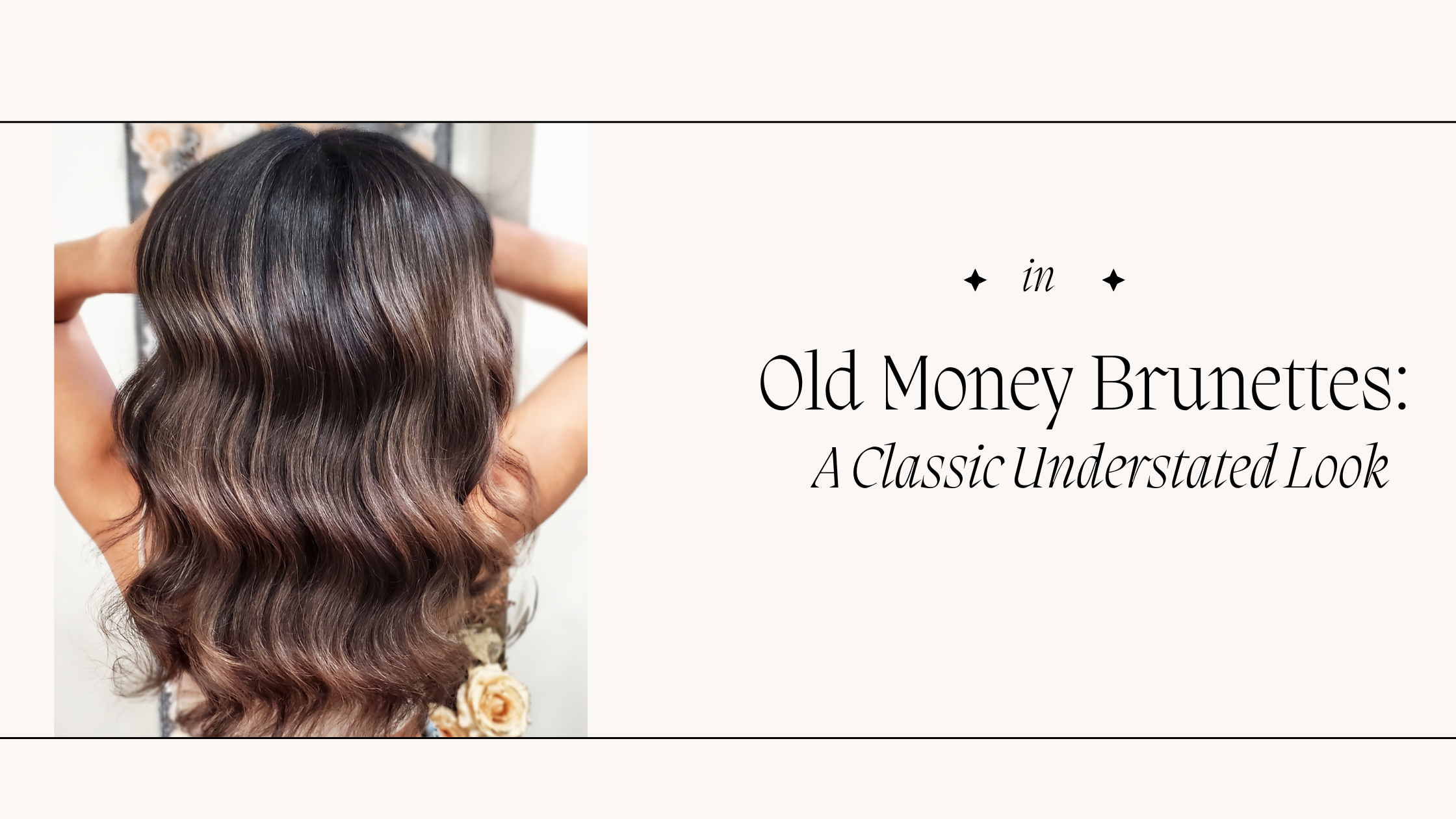
“Old Money Brunette” is the sophisticated color trend you’ll be seeing everywhere in 2025. But what exactly does “old money” mean in terms of hair? It’s all about luxurious, subtle highlights that add dimension while remaining understated and elegant. Think of it as the heritage-inspired or vintage vibe your grandmother might have—beautiful, tailored, with no sign of harsh lines or color banding.
Key Points:
Focus on rich, multi-tonal browns with minimal brassiness.
Opt for soft highlights around your face for a sun-kissed glow.
Maintain the illusion of natural color—as if you’ve inherited gorgeous hair from generations of wealthy ancestors.
Pair your new colour with weekly treatments to boost shine and keep hair looking picture-perfect.
If you’re wanting a change from lighter, more processed hair, the Old Money Brunette trend offers an effortlessly classy look.
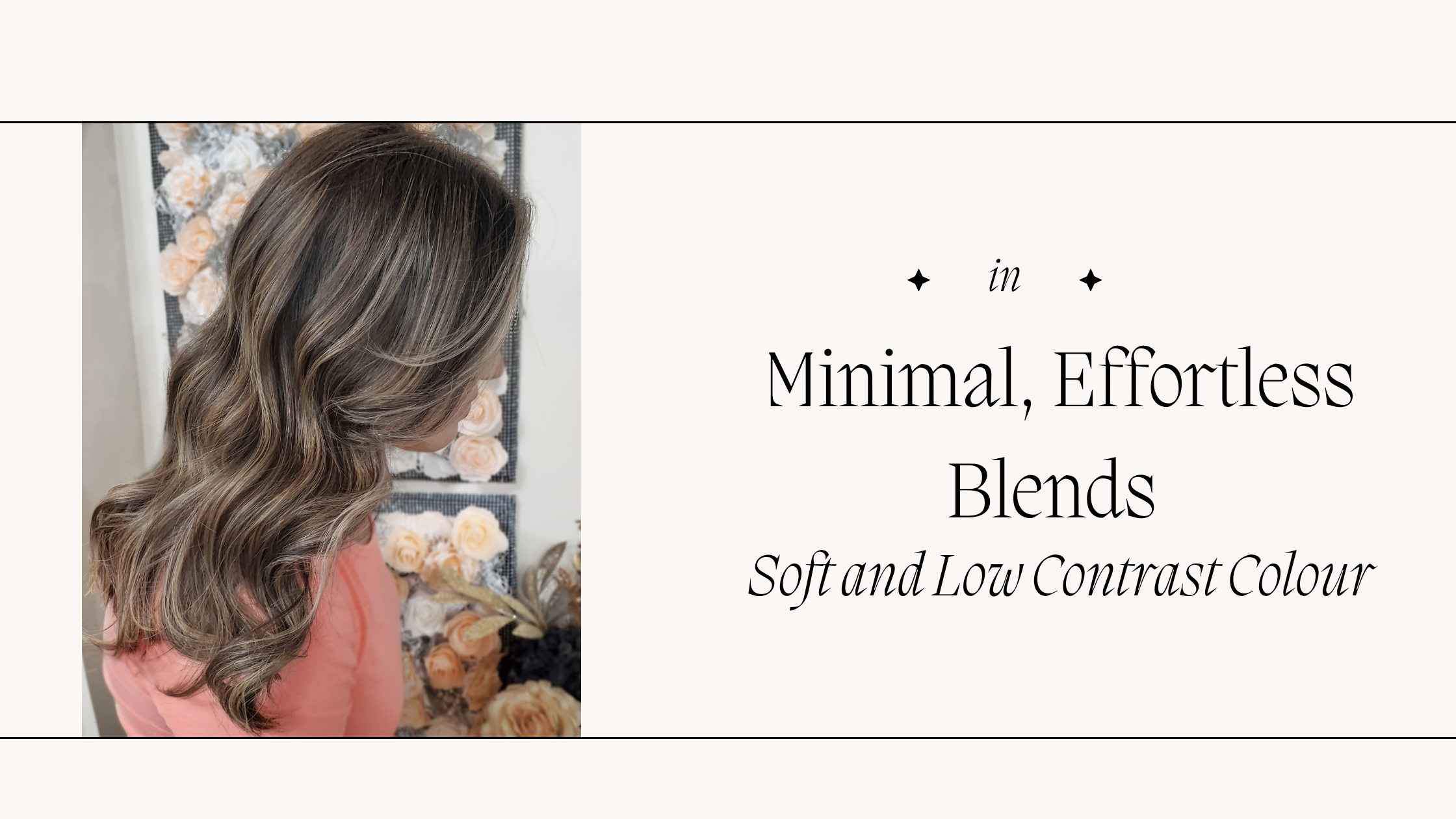
No one wants harsh lines and clunky chunks of color anymore. The 2025 approach to coloring is all about soft blends that transition seamlessly from root to tip. Whether you’re going for a balayage, an ombré, or just some strategic highlights, the key is to blend, blend, blend.
Minimal, effortless blends can be achieved by:
Using a feather-light technique when painting highlights.
Keeping the color shift subtle: no more than two to three levels lighter than your natural base.
Embracing your natural hair texture and working with it rather than against it.
It’s not a wash of color that feels high-maintenance—it’s about balancing harmony and dimension in a way that grows out beautifully.
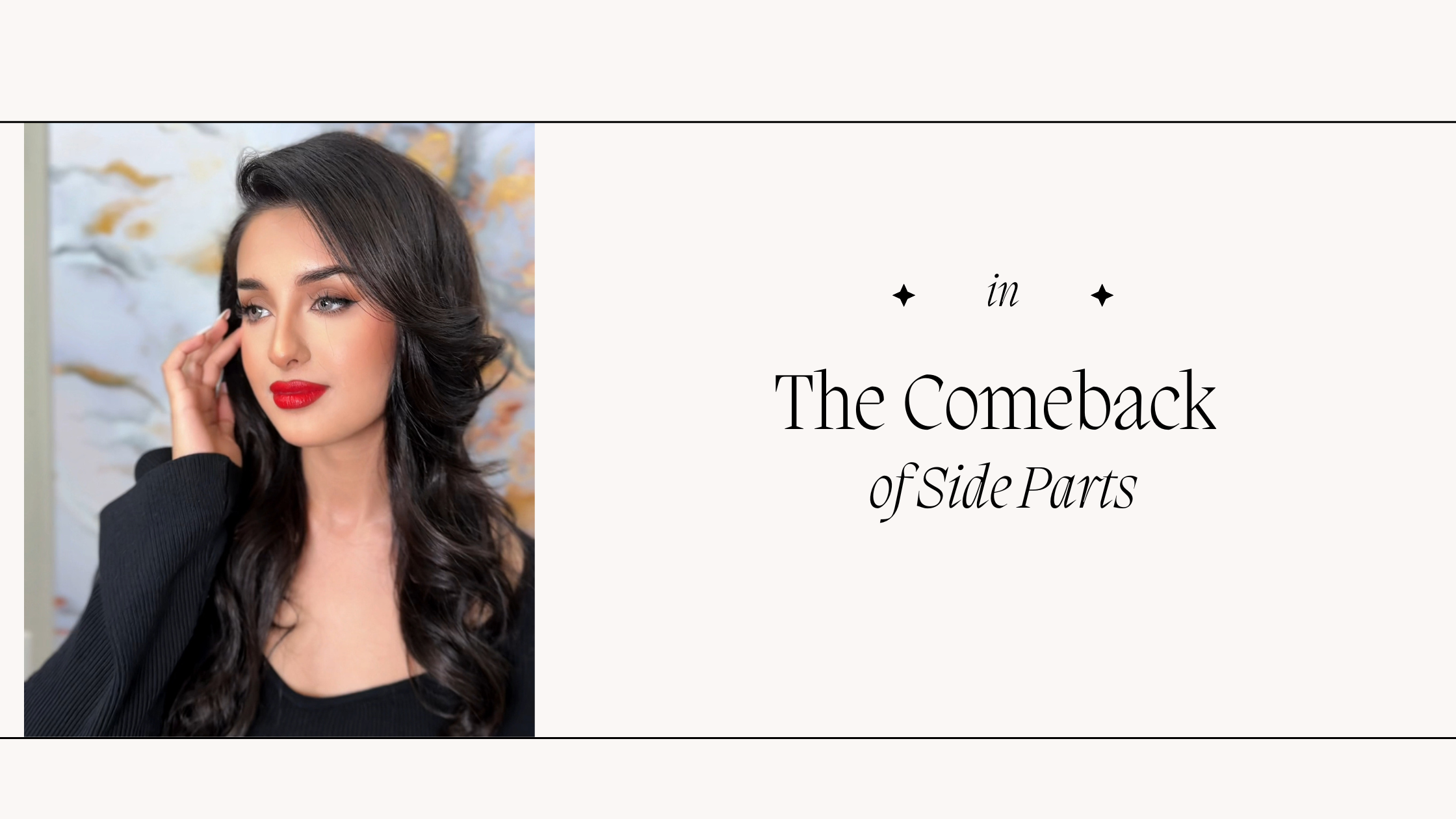
Hear ye, hear ye! Side parts are back in 2025. Once left in the dust by the middle-part obsession, the side part returns to reclaim its rightful place.
Why Side Parts Rock:
Volume: By flipping your hair to one side, you automatically add lift at the roots.
Face Framing: A side part can highlight your cheekbones and eyes, giving you that instant “style factor.”
Flexibility: Side parts suit a wide range of hair textures and lengths, making them a versatile choice for many people.
If you’ve been sporting the same center part for the past few years, consider a refresh by switching it up. It can change your entire look without any major haircut or color adjustment.
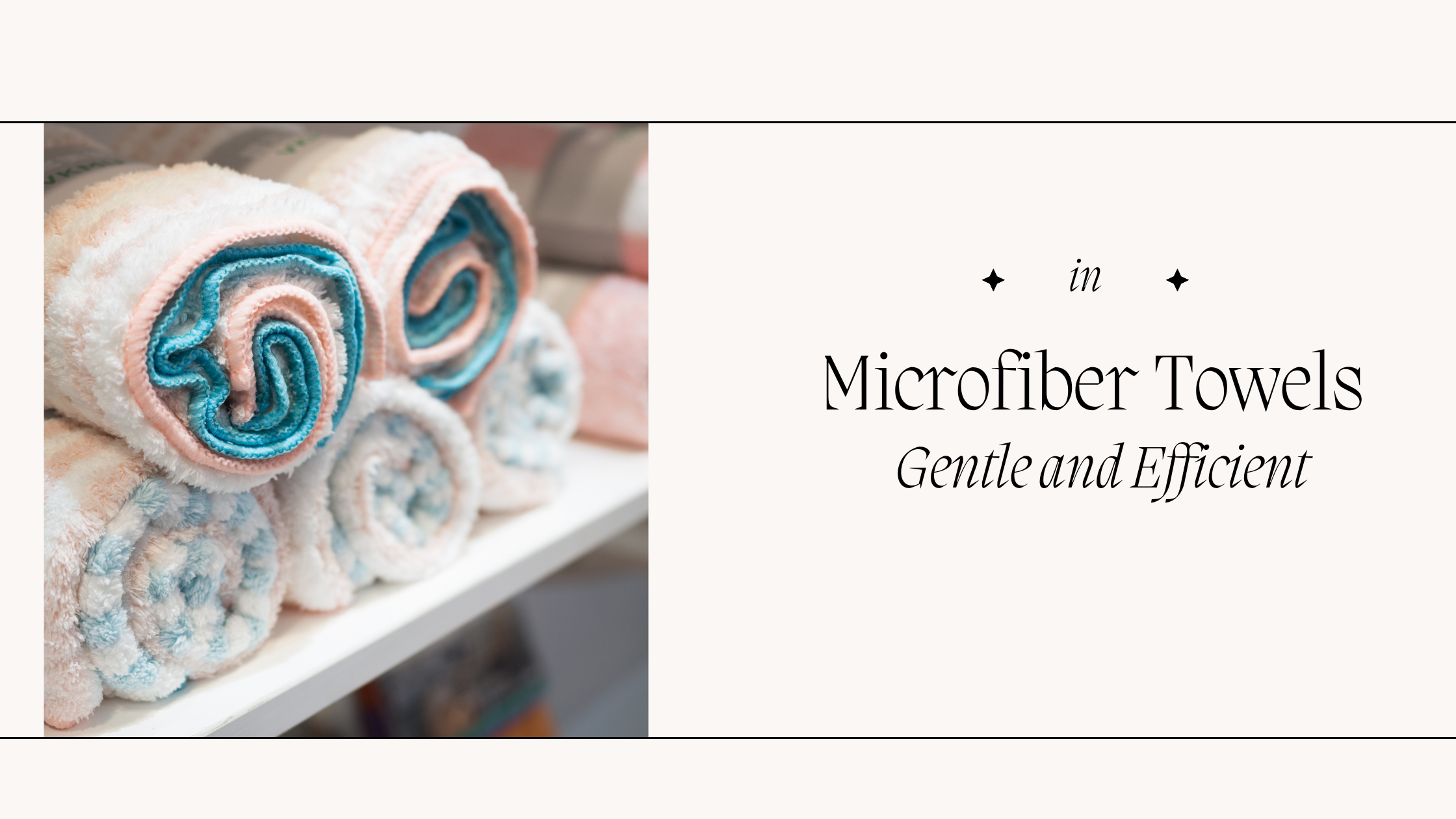
You might be thinking, “A towel? How can that possibly matter for my hair?” Trust me, it matters more than you’d think. Microfiber towels have rapidly gained popularity because they absorb water quickly, reduce friction, and minimize hair cuticle damage—crucial factors for healthy, shiny hair.
A regular cotton towel can be rough on your hair, leading to breakage, especially if you’re in the habit of vigorously rubbing your hair dry. Switching to a microfiber towel helps cut drying time and reduces frizz, making it easier to style and maintain. If you’re serious about your hair health, this is an easy but effective upgrade.
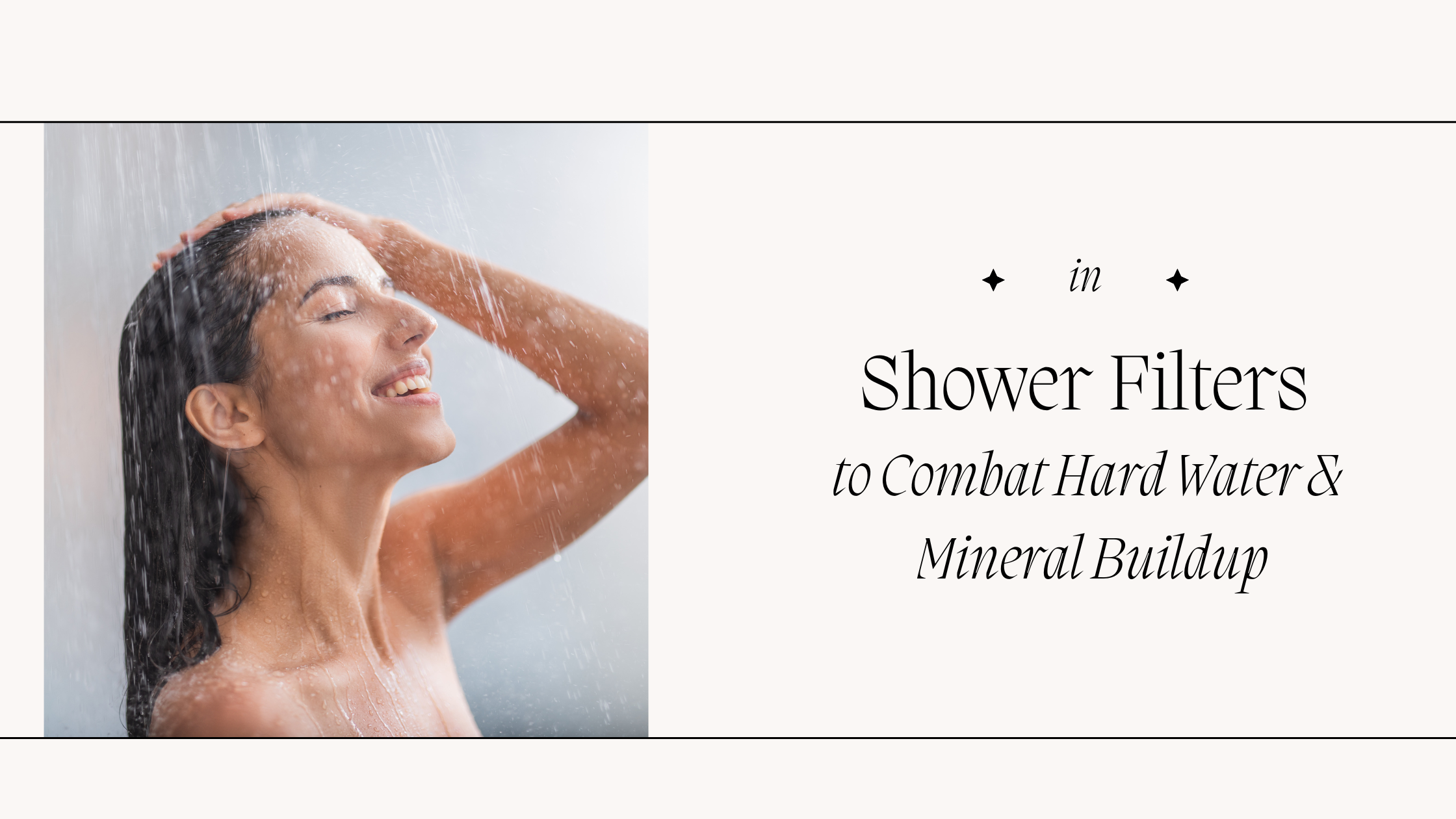
In many regions, hard water carries a high mineral content, particularly calcium and magnesium. These minerals can wreak havoc on your hair by:
Leaving behind a film or residue that weighs hair down.
Increasing dryness and tangling.
Making your color look dull or brassy over time.
That’s why shower filters are in. By filtering out harsh minerals and sometimes chlorine, you get softer water that’s kinder to your hair (and skin). If you’re noticing your hair feeling lifeless or overly dry, a shower filter could be a game changer.
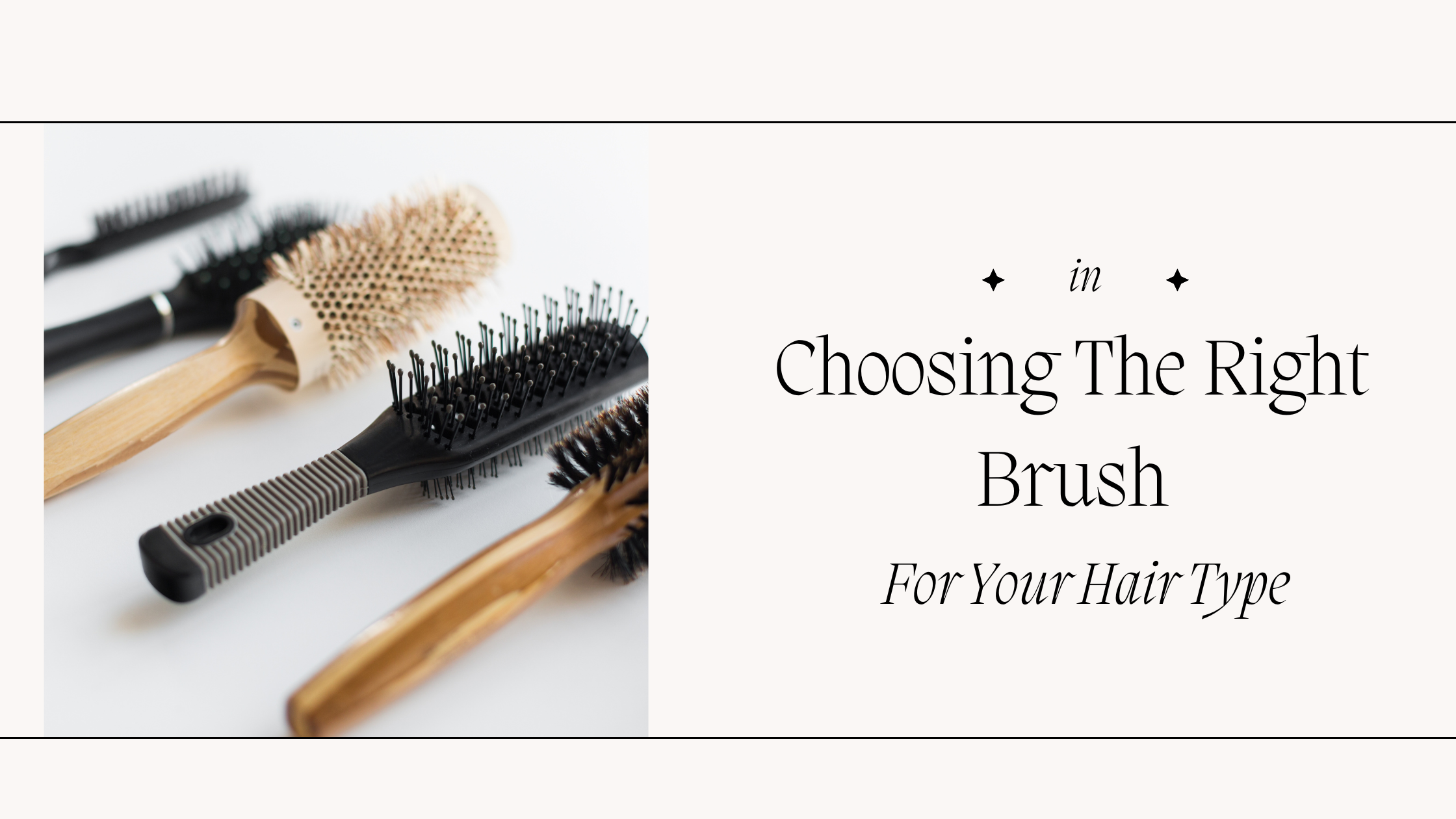
Not all hairbrushes are created equal. If you’re using the wrong brush, you may be unknowingly causing breakage or frizz. Consider these guidelines:
Fine Hair: Opt for a boar bristle brush to gently distribute natural oils and prevent static.
Thick or Curly Hair: A wide-tooth comb or paddle brush designed for detangling will reduce pain and breakage.
Wet Hair: Use a wet brush or a gentle detangling comb to avoid snapping fragile, waterlogged strands.
Styling: For blowouts, a round brush with vented or ceramic barrels can help enhance volume and reduce drying time.
If you’re not sure which brush works best for you, ask your hairstylist. They can guide you to the tools and techniques that will keep your hair healthy and styled to perfection.

Last on our list of “ins,” but definitely not least, is the power of referrals. When you refer friends and family to a small business like your local salon, you not only help that business grow but also ensure that the talented stylists in your community can keep innovating and offering top-notch services.
Referrals often come with benefits:
Special discounts or loyalty rewards.
Exclusive access to new products or services.
Feeling good about supporting local businesses and helping them thrive.
If you love your hair stylist, share the good vibes! A small gesture like a referral can significantly impact a stylist’s success in your community.
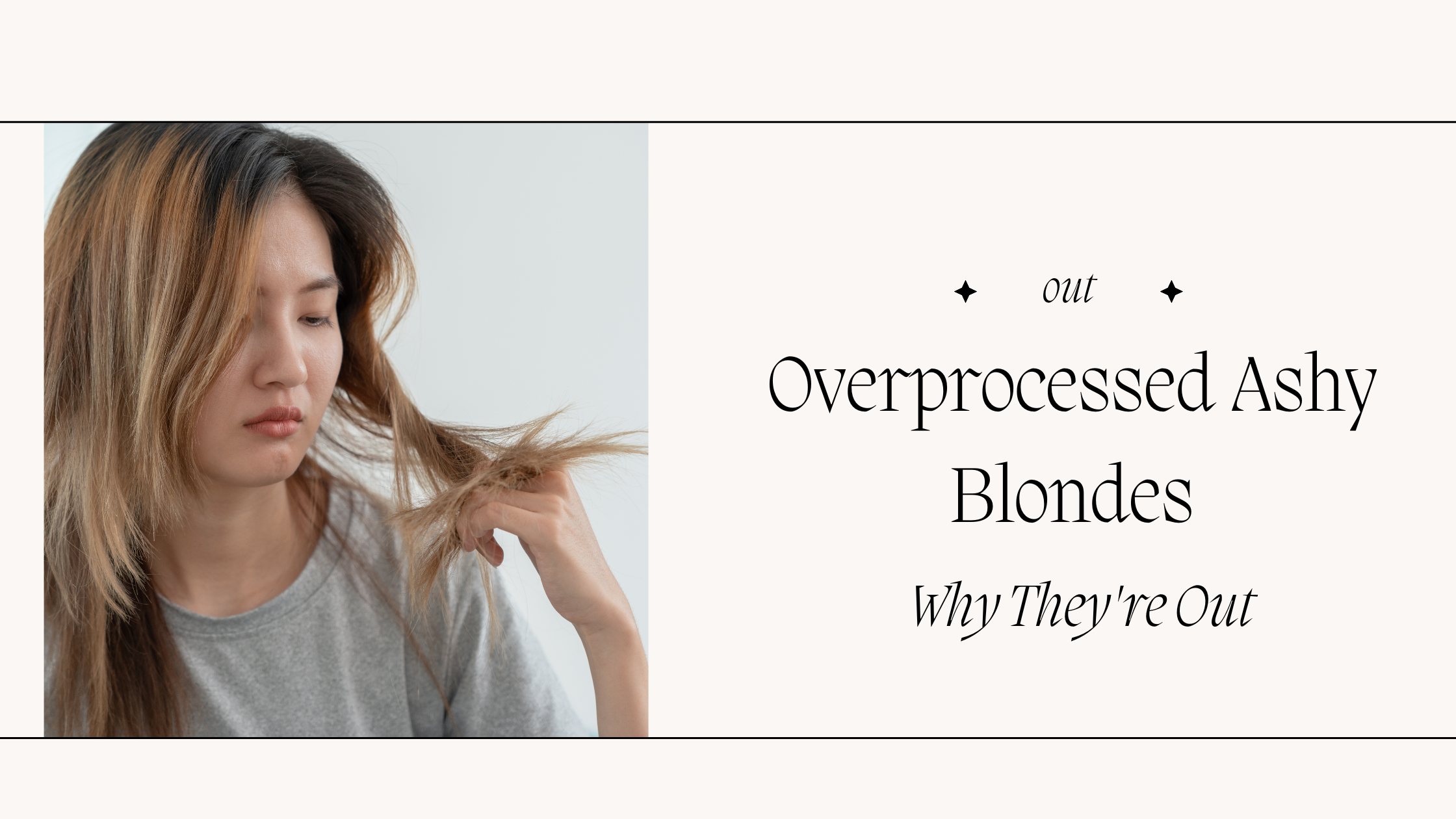
Alright, let’s move on to some “outs.” Overprocessed ashy blondes are a thing of the past, especially for those with naturally darker hair. Over-bleaching can lead to:
Severe damage and breakage.
A dull, drab tone that lacks dimension.
High maintenance routines, with frequent toning and root touch-ups.
Sure, a well-executed cool blonde can be gorgeous, but in 2025, we’re seeing a shift toward more natural, warmer blondes or bronde shades. If you’re naturally dark-haired, you can still go blonde, but do it with a strategic plan to keep the integrity of your hair intact.
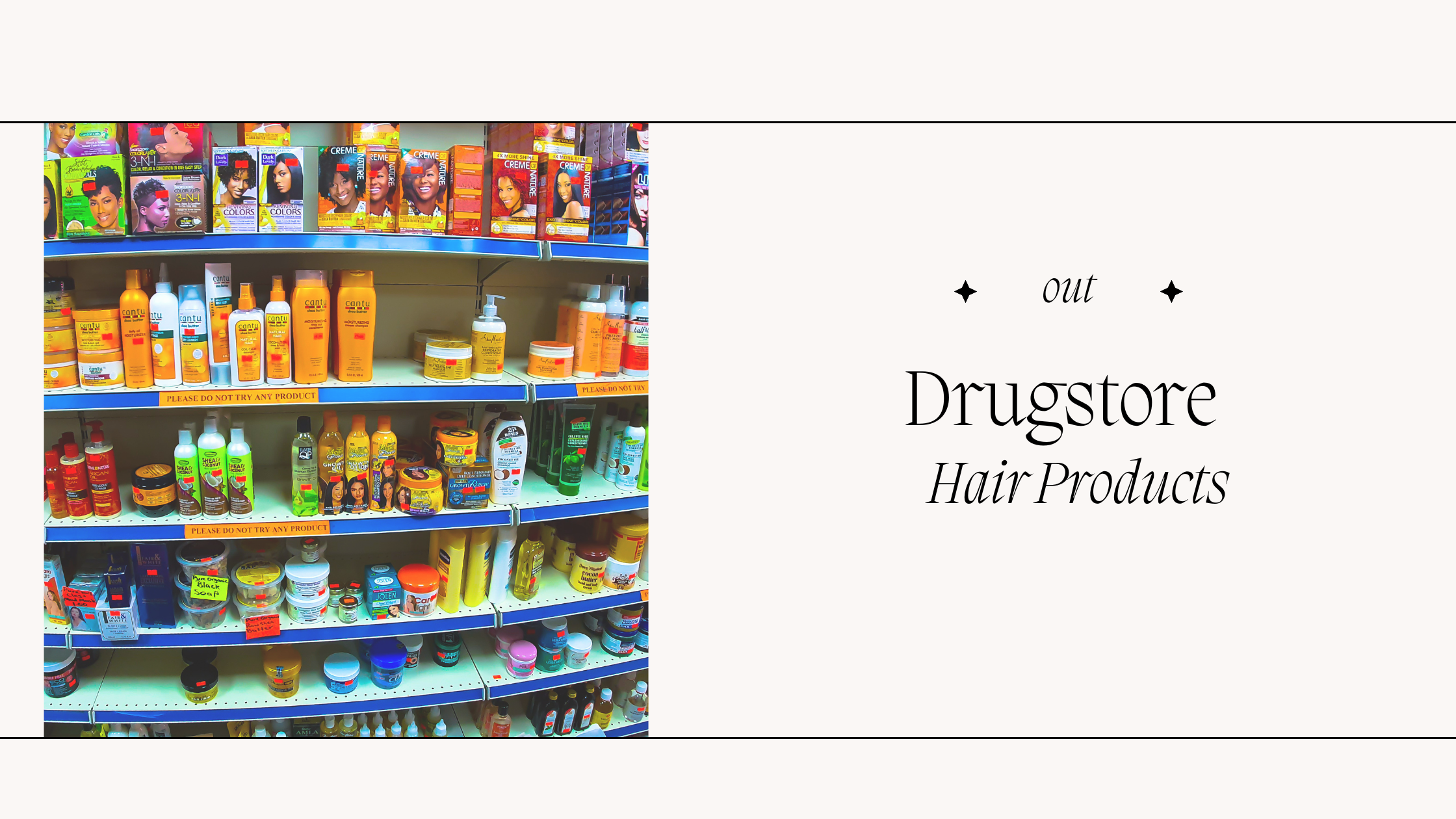
It’s time for a reality check: drugstore hair products are often formulated with cheaper ingredients that can cause product buildup and fail to address individual hair needs. Many budget-friendly shampoos and conditioners rely on harsh sulfates, parabens, or silicones that weigh your hair down and create residue.
Investing in professional salon brands or higher-quality lines is a step that pays off in the long run. Quality products usually have:
Better ingredients, like plant-based oils or gentle cleansers.
Research-backed formulas that address specific concerns (e.g., color protection, volumizing, frizz control).
Concentrated formulas that require less product each use, balancing the cost over time.
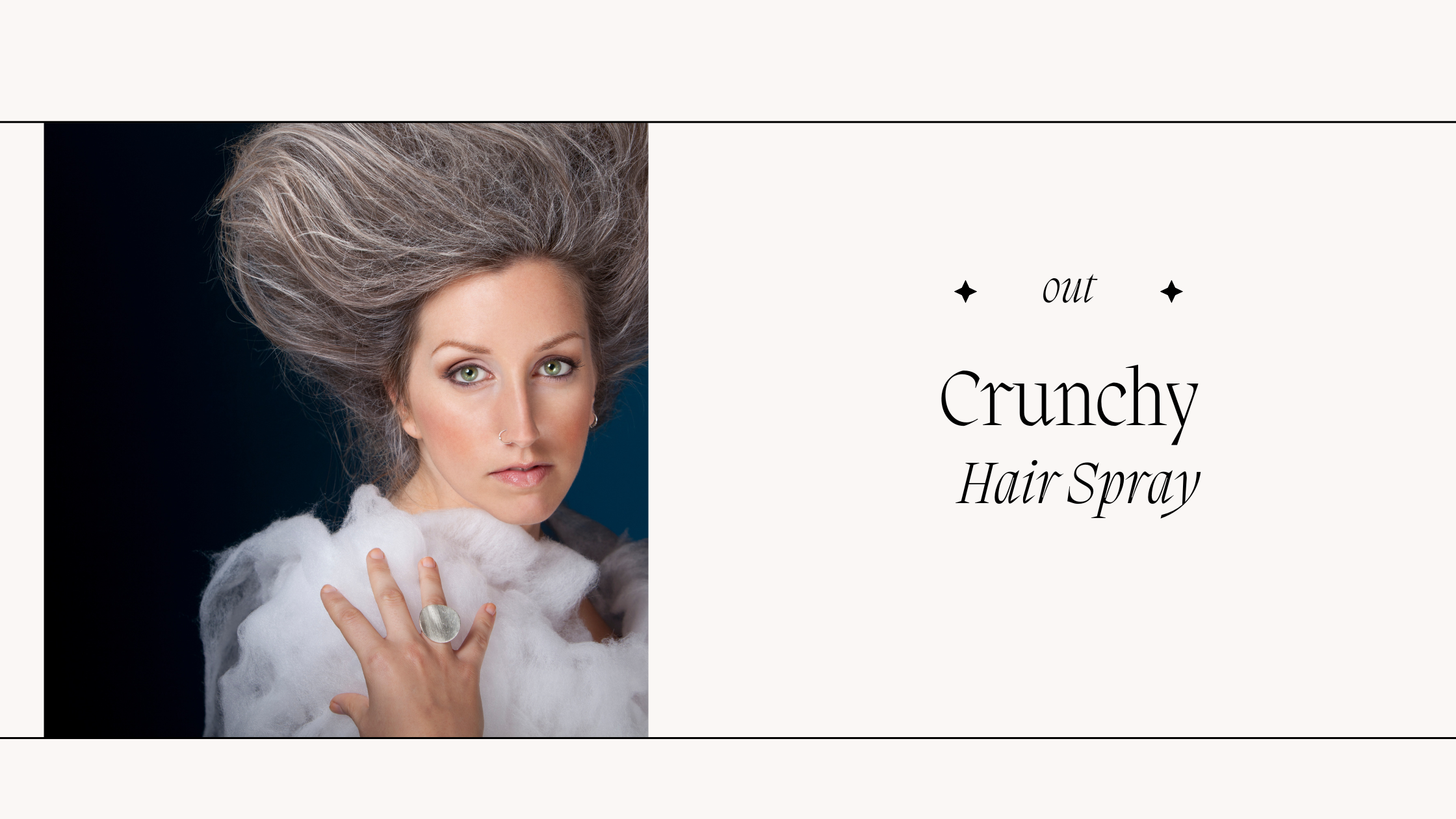
Raise your hand if you’ve ever sprayed your hair so stiff that it felt like cardboard. While a strong hold might be useful for, say, a dance performance under bright stage lights, for everyday wear, crunchy hairspray is unnecessary and outdated.
Alternatives to crunchy sprays:
Flexible Hold Hairsprays: These give you manageability and hold without the crunch.
Texturizing Sprays: Perfect for wavy or curly hair to add volume and separation.
Hair Creams or Pomades: For taming flyaways or adding smooth definition without stiffness.
In 2025, the goal is movement and touchable softness—say goodbye to hair that won’t budge.
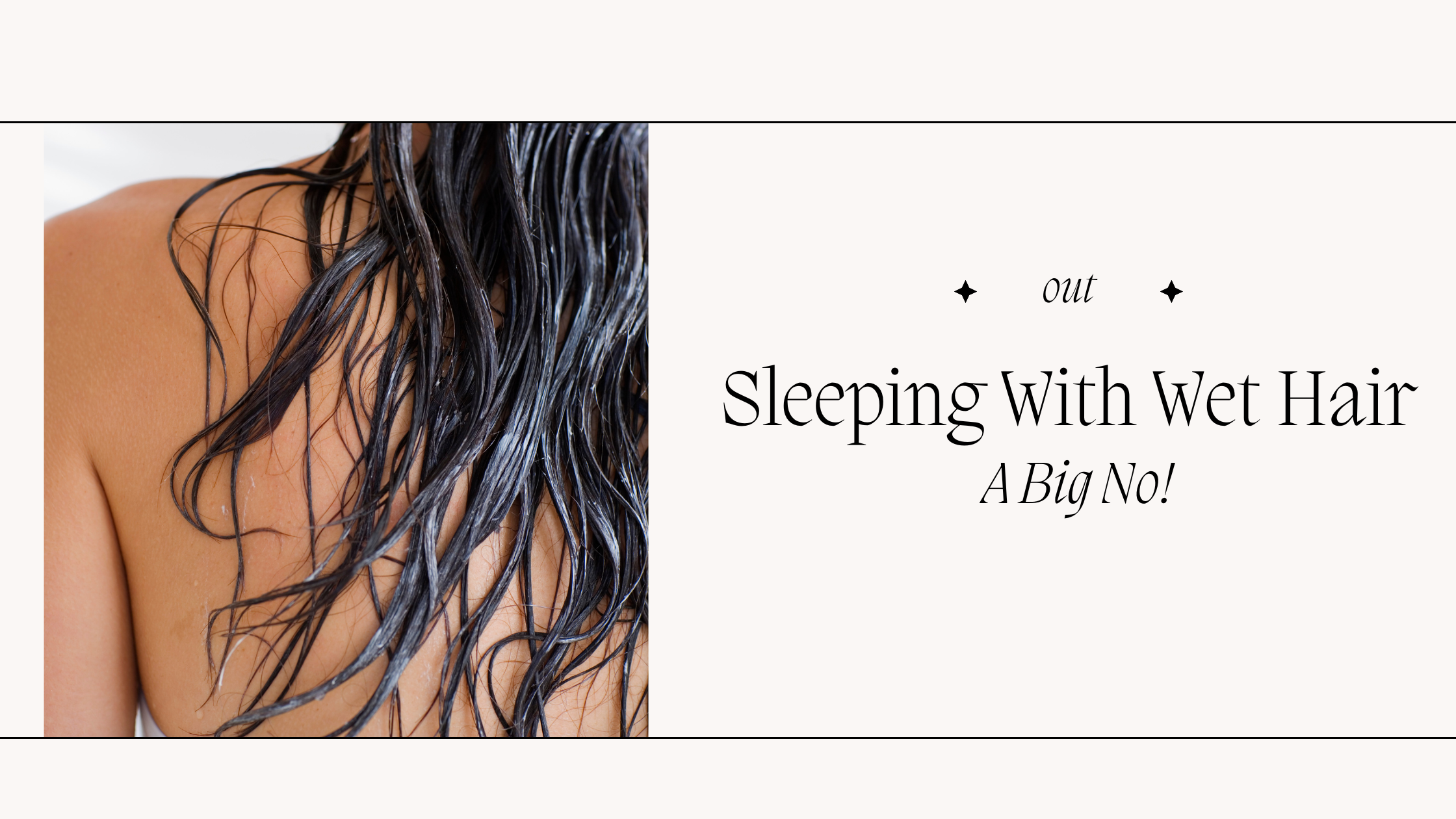
After a long day, hopping in the shower at night might feel relaxing, but sleeping with wet hair can lead to:
Breakage, because wet hair is more fragile.
A musty smell if your pillow never fully dries, creating an environment for bacteria.
Odd kinks and creases in your hair that can be hard to style in the morning.
If you’re pressed for time or simply prefer to shower at night, use a hair dryer on a low-heat or cool setting and try to get your hair at least damp to nearly dry. A leave-in conditioner can further protect your strands overnight.
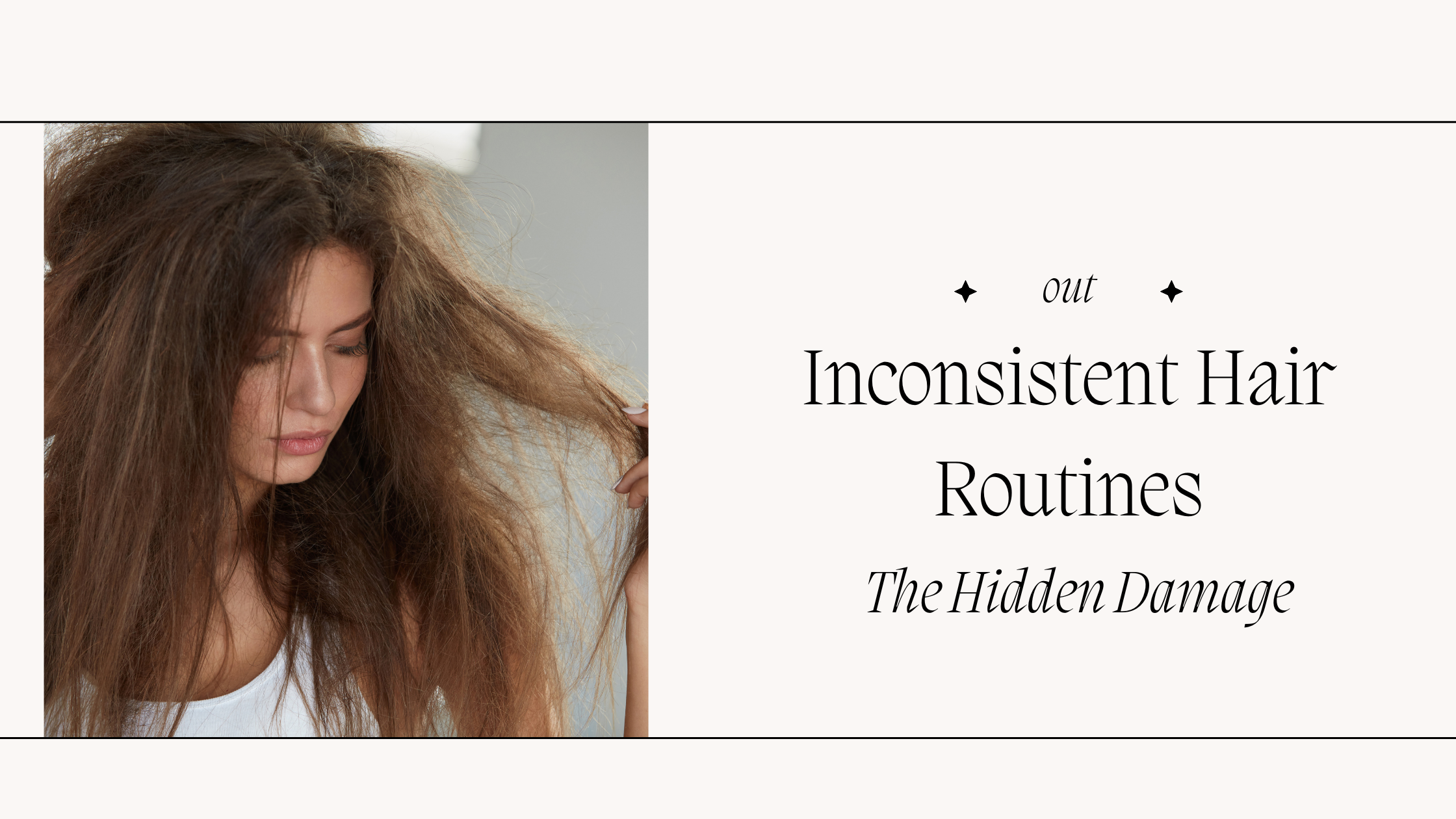
You might be thinking, “I’ll just do a hair mask once in a while, skip heat protectant occasionally, and everything will be fine.” However, inconsistent routines rarely yield the results you desire. Maintaining healthy, beautiful hair requires commitment.
The Problem With Inconsistency:
You never get into the rhythm of proper hair care, so your hair fluctuates between healthy and stressed states.
You spend more money on damage control instead of consistent, preventative products.
You don’t see the long-term benefits of stable, healthy hair growth.
As with any habit—consistency is key.
High Heat Styling: Proceed With Caution
Yes, we love a good blowout or iron curl as much as the next person, but using high heat constantly can lead to:
Dry, brittle ends
Split ends and breakage
Faded color if your hair is dyed
Scalp irritation
One quick fix: dial down your hot tools a notch. Most hair does perfectly fine at lower temperatures. Always, always use a heat protectant before turning on the heat. Plus, consider giving your hair regular “heat breaks” by trying heatless styling methods (e.g., overnight braids, rollers, or pin curls).
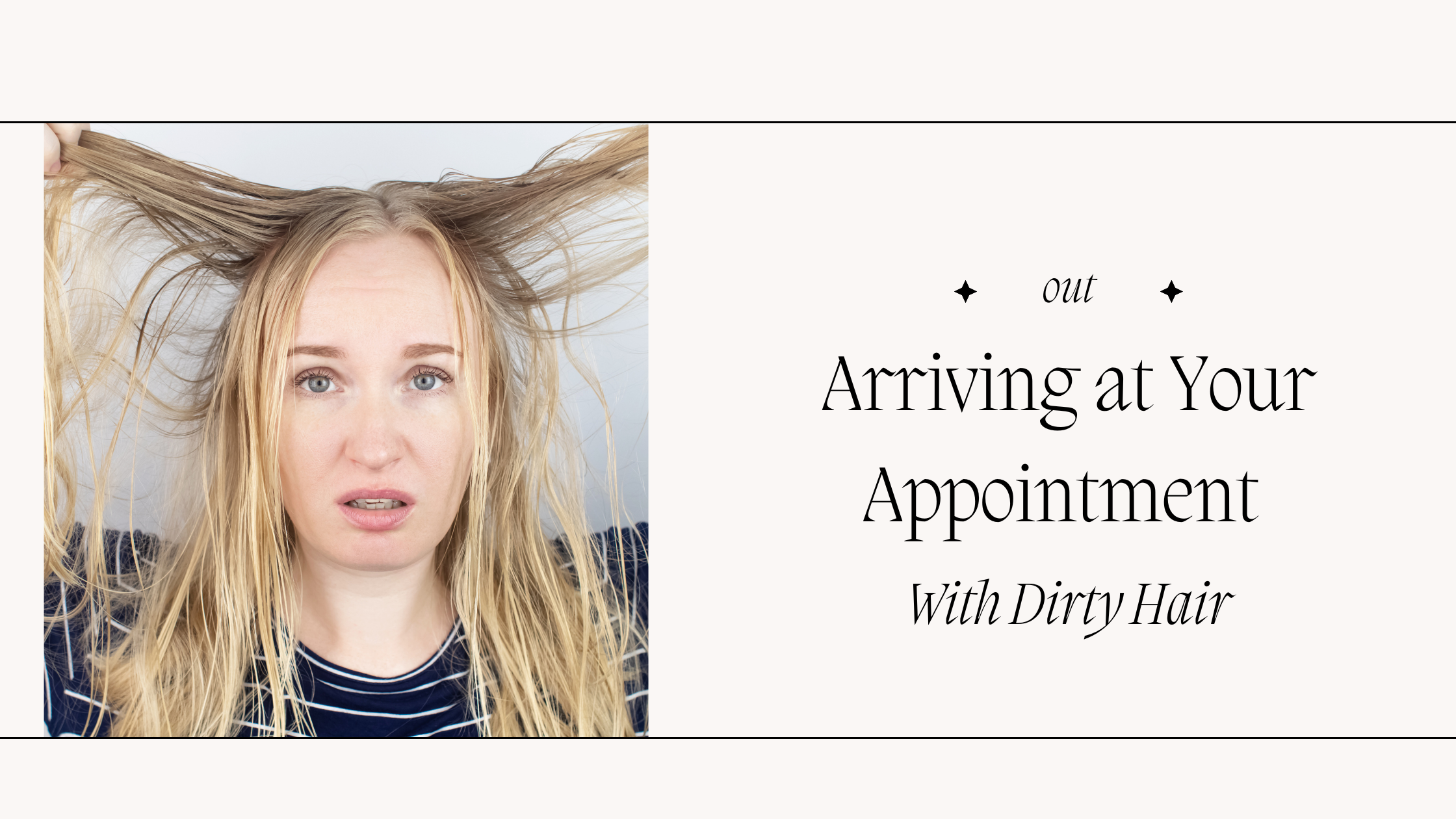
There’s a common myth that dirty hair takes color better, but guess what? That’s not necessarily true, especially if your hair is excessively oily or loaded with product. Styling or coloring dirty, greasy hair can be unpleasant for both you and your stylist.
Why It’s Out:
Bad Odor: You may not notice it yourself, but an unwashed scalp can develop a smell that’s off-putting.
Uneven Results: Heavy oils or buildup can prevent colour from penetrating the hair shaft.
Time-Consuming: Your stylist may need to perform extra cleansing steps, slowing down the entire appointment.
When in doubt, ask your stylist beforehand. Often, lightly washing your hair the night before (without heavy styling products) is the best way to ensure a clean canvas for your hair service.
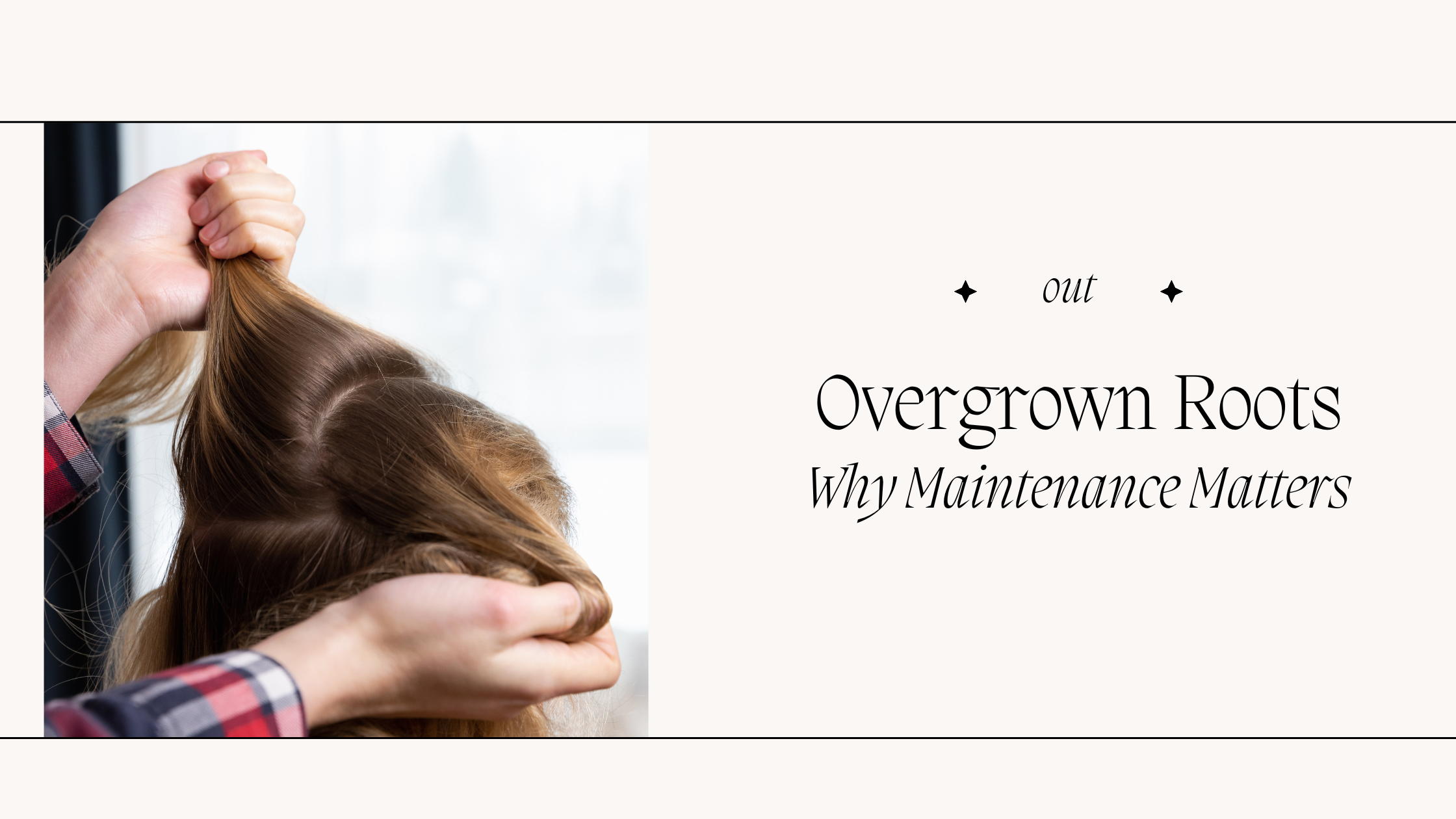
Roots that have grown out by several inches can drastically affect the look and feel of your hair. While grown-out color can be an intentional style choice (like a rooted balayage), letting your color go untended for too long can make you look less polished and can be more complex to fix when you’re finally ready to refresh.
Why Not to Wait:
More time and product are needed to lift or blend old and new color.
Greater chance of color banding (that dreaded line of demarcation).
You may feel self-conscious, especially if your natural color is starkly different.
A quick visit to your hairstylist every few months keeps you looking current and ensures the health of your hair remains intact.
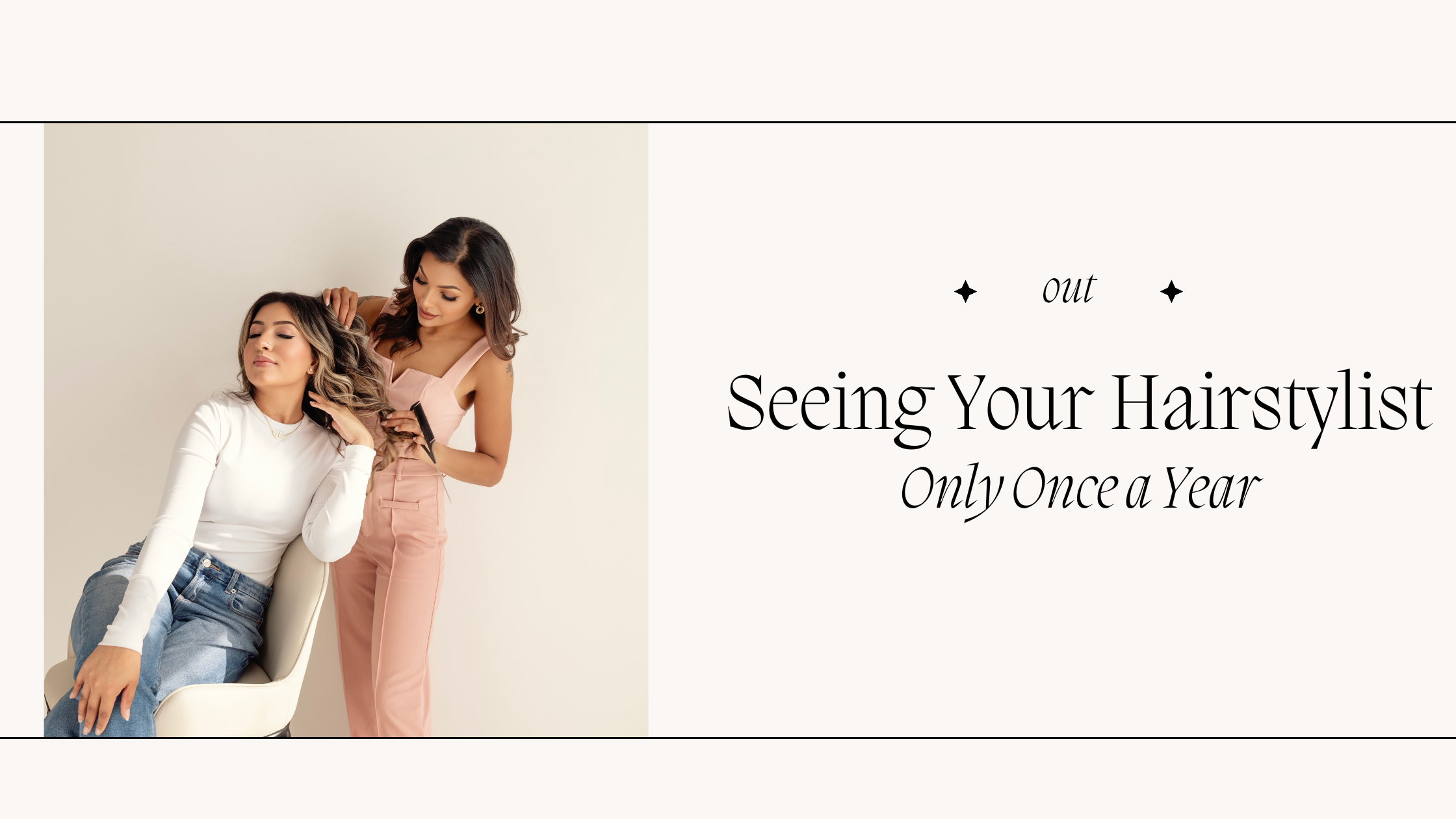
Annual visits might work for dental check-ups, but for hair? Not so much. If you want to keep your color fresh, your cut polished, and your hair in prime condition, frequent salon visits are vital. Waiting a full year can lead to:
Extensive damage that requires more drastic cutting.
Color correction appointments that are longer and more expensive.
A period of feeling less confident about your hair’s appearance.
Regular trims (every 6-12 weeks) and consistent color touch-ups (depending on your style and growth rate) ensure your hair remains healthy, strong, and on-trend.

We’ve all been tempted by the DIY route. Box dye from the drugstore or picking up color at Sally’s might seem convenient, but you could pay a heavier price in the long run.
Ingredient Quality: Many box dyes use highly concentrated chemicals that can damage your hair’s cuticle.
Inexperienced Application: Without proper training, it’s easy to overlap color, miss spots, or create banding.
Color Correction: If things go wrong, you’ll likely spend more money correcting it than you saved with DIY.
The final result often lacks the professional blend, tone, and dimensional highlights you get from a salon. Trust the experts if you’re aiming for consistent, flattering color—your hair will thank you.
Final Thoughts
When it comes to 2025 hair trends, the overarching theme is healthy, luxurious, and effortless. From weekly hair treatments to subtle, well-blended colour techniques, this year is all about protecting what you have while enhancing your natural beauty. We’re saying goodbye to destructive habits, overly stiff or heavily processed styles, and harmful product choices. Instead, we’re embracing side parts, microfiber towels, shower filters, and the power of consistent, thoughtful hair care routines.
If you’re ready to revamp your hair game, start by focusing on the foundational elements: the right products, the right tools, and the right techniques. Make a commitment to regular salon visits, invest in quality products (avoiding cheap drugstore versions), and don’t be shy about referring your friends and family to a stylist you truly trust. Here’s to a year of gorgeous, healthy hair for everyone!
Remember to save this post for reference, comment below with your thoughts or questions, and follow for more tips on trending hair styles and optimal hair health. Happy styling, and I’ll see you in my chair!
